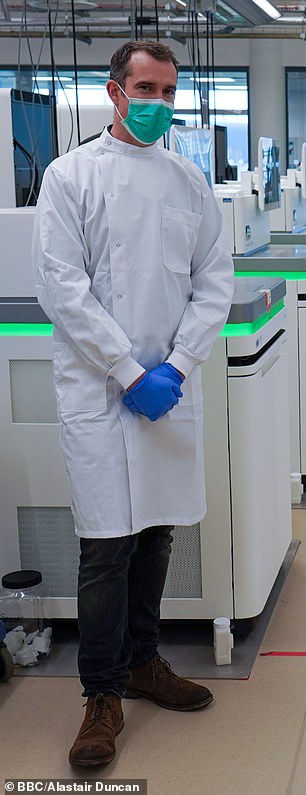
The next pandemic is already in the post. This month, the authorities in Guinea in West Africa declared a new Ebola outbreak; Saudi Arabia’s health ministry has reported four new cases of MERS, a coronavirus we catch from camels, writes Dr Chris van Tulleken
As an infectious diseases doctor at the Hospital for Tropical Diseases, which is part of University College London Hospital (UCLH), I see patients with infections — and I also study viruses in the lab at University College London next door.
Yet despite my clinical and research experience, over the past year I’ve been utterly wrong about so much of this pandemic — and especially about the infection it would cause.
When I first realised in early 2020 that we were facing a global pandemic of Covid-19, I imagined that this new foe would be a virus that largely affected the lungs — a more serious version of the four coronaviruses that already circulate and cause colds.
This was the received wisdom following a very similar but far more deadly coronavirus that emerged in 2003: SARS.
That belief changed entirely last March when my twin brother, Xand, caught Covid.
His symptoms were miserable but expected: cough, fever, exhaustion and loss of smell and taste.
He seemed to manage them well in isolation, and within a fortnight appeared to be on the road to full recovery.
But then one morning, early in his recovery, while I was working a shift on a Covid ward at UCLH, Xand came into A&E as an urgent case.
He’d developed a dangerous heart rhythm disorder, atrial fibrillation, likely as a result of the virus inflaming his heart.
Xand had a heart rate of 170 beats per minute (it should have been around 60) and his blood pressure was low. Colleagues from the A&E and anaesthetics teams sedated Xand and cardioverted him — giving him a large electric shock to temporarily stop his heart, allowing it to restart in a normal rhythm.
It was a terrifying and, for me, tearful moment. This is a fairly routine procedure but the worst consequences are severe.
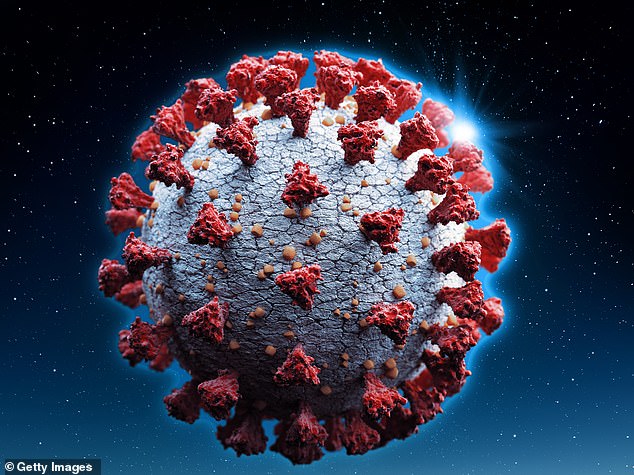
Covid is starting to make many of us wonder if contracting a virus as an adult may explain the symptoms many previous patients have been struggling with. The latest science of long Covid is just one of the topics covered in a new BBC Horizon special, to be broadcast this Thursday, that marks nearly a year since Britain first entered lockdown
Nor was this to be the last time: Xand came into the emergency room twice more as the year went on. It was clear that Covid had damaged his heart.
As this was unfolding in my own family, it was becoming clear from patients and colleagues from other specialties that Covid affects every organ system — even in those who don’t have a serious infection.
We now know from hard-won experience that it can have widespread and devastating effects, causing strokes and brain inflammation, clots and heart attacks.
And contrary to media reports, we were seeing these problems in many young and previously healthy people. A few died, but many have been left devastated by an apparently mild illness.
Xand is still taking medication to keep his heart in rhythm.
Meanwhile, other effects on the heart are still unfolding. Only last week, a study by UCL found high levels of potentially chronic heart problems among people who have survived hospitalisation with Covid — revealed in blood tests for troponin, a protein released from injured heart muscle.
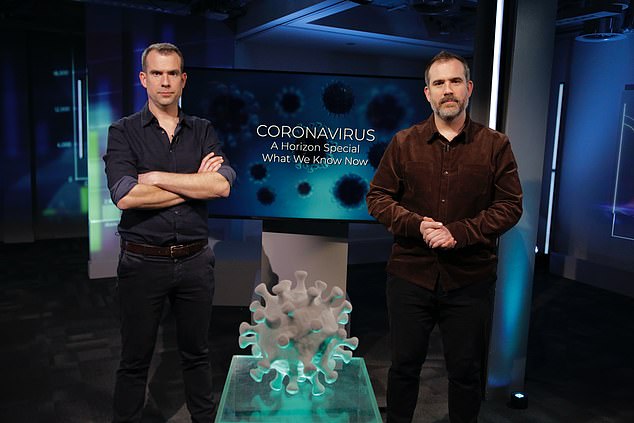
The lessons learned: Doctors Chris (left) and Xand van Tulleken in a Horizon report. We now know from hard-won experience that it can have widespread and devastating effects, causing strokes and brain inflammation, clots and heart attacks
Perhaps the most worrying side-effect for younger people is long Covid — a cluster of different symptoms along with severe ongoing fatigue.
For a long time, the medical profession has been unable (and, occasionally, unwilling) to help people with fatigue syndromes such as ME (myalgic encephalomyelitis) and fibromyalgia. They often have normal test results and they can get written off.
Covid is starting to make many of us wonder if contracting a virus as an adult may explain the symptoms many previous patients have been struggling with.
Covid-19 facts 10-30% of people who get Covid are responsible for 90% of further infectionsThere are 200 new Covid vaccines currently in development — 60 are in clinical trials
Advertisement
The latest science of long Covid is just one of the topics covered in a new BBC Horizon special, to be broadcast this Thursday, that marks nearly a year since Britain first entered lockdown.
Presented by me, Xand and Dr Guddi Singh, a paediatrician at Guy’s and St Thomas’ NHS Foundation Trust, it features interviews from scientists and clinicians at the forefront of the fight.
We have learned so much in the past year, and now have the knowledge to end the pandemic and stop the appalling sickness and death caused both by the coronavirus and by lockdowns.
And the data we have seen seem to make some choices increasingly clear if we want to relegate this virus from a lethal pandemic to an occasional pestilence.
Here are some of the lifesaving lessons that we’ve learned.
Genetics are key to beating pandemic
What we know about the new coronavirus, how it behaves and how to tackle it, is the culmination of the revolution in genetics that started with the project to sequence the human genome.
In the 20 years since that was completed, we haven’t quite seen the promised benefit to us all. Until now.
The story of this pandemic — past, present and future — can be written with an alphabet of just four letters: those of the genetic code that’s common to all life.
These letters — A, T, C and G — are the building blocks of the DNA blueprint in all our cells, including many viruses. The ways in which these letters are combined in long sequences determine what makes all living things unique.
It is thanks to the advances in genetics, unimaginable even a few years ago, that we now know enough about how this virus spreads and mutates so we can actively end this pandemic and return to normal life.
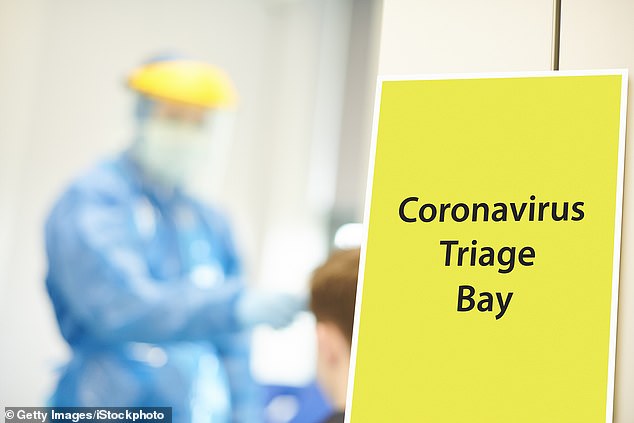
What we know about the new coronavirus, how it behaves and how to tackle it, is the culmination of the revolution in genetics that started with the project to sequence the human genome
The sequence of the Covid-19 genome was published in January 2020 — astoundingly fast. This meant that by early February, Professor Teresa Lambe and the team in Oxford (working with AstraZeneca), along with other scientists around the world, were already designing the vaccines many of us have now had.
As Teresa explained when we interviewed her, the vaccines licensed in the UK are gene-based, which means they don’t need a sample of the virus to start testing and manufacturing: they just need the genetic code, which can be sent in an email. (This massively speeds up the development process as there’s no need to culture live virus.)
Genetics have also allowed us to diagnose the virus. The gold standard PCR test is a genetic test that looks for parts of the virus genome. It is highly accurate and has allowed us to understand so much of the virus biology.
Genetic technology has also enabled the Covid-19 Genomics UK Consortium (COG-UK) to track the emergence of new variants by sequencing diagnostic samples from all over the UK.
As Professor Sharon Peacock, who heads up COG-UK, told me, it is thanks to this work that we are now increasingly sure that our homegrown ‘Kent’ variant, which swept across England last November, is not just more transmissible but may also be more deadly, hospitalising a greater proportion of the patients who get it.
For a while, it had seemed like this virus changed relatively slowly — a couple of mutations a month. But not now.

We know that allowing a surge to spread through the population once the vulnerable are vaccinated will give an advantage to those variants capable of spreading in vaccinated people. People are seen in Regents Park, London
I also spoke with an old friend and colleague, Ravi Gupta, a professor of clinical microbiology at the Cambridge Institute of Therapeutic Immunology and Infectious Disease and member of NERVTAG (the body that advises the Government on new respiratory viruses).
He described his shock when he first saw the gene sequence for the Kent variant: it had not one or two but 23 different DNA mutations. He’d seen this exact pattern in a patient with a perilously weak immune system (as a result of chemotherapy for cancer) with Covid at Addenbrooke’s Hospital in Cambridge who’d been suffering with the virus for 100 days.
The patient was given ‘convalescent plasma’ from those who had recovered from Covid. The plasma contained antibodies that should, theoretically, kill the infection. Instead, the virus evolved to get around this by accumulating mutations in its DNA. By the time the patient had died, the virus had evolved 37 separate mutations.
This may be where some of the new variants are coming from — chronic cases in patients with immune dysfunction where the virus has a unique opportunity to try out different evasion strategies.
The genetic sequences that we use to diagnose patients are now also being used to build the next round of vaccines. We are going to see variants emerge around the globe, but instead of starting from scratch, the sequence can be plugged in and an updated vaccine produced in months, not years. I can’t imagine where we would have been now with this pandemic had it not been for genetics — but without doubt, we would be desperately worse off.
Vaccines get us on road to freedom
Eventually, once as many people as possible are vaccinated, herd immunity will reduce transmission of the virus. But this will take many months — and we are a very long way off having natural immunity from the massive waves of virus that have spread.
In the meantime, reducing transmission is vital for the success of our vaccine rollout. Allowing the virus to continue to spread before widespread vaccination will not only lead to deaths and long Covid but also risks the emergence of vaccine-resistant strains.
It is a law of biology as immutable as the law of gravity that viruses mutate when they spread. Every infected person and transmission gives a chance to the virus. We know that allowing a surge to spread through the population once the vulnerable are vaccinated will give an advantage to those variants capable of spreading in vaccinated people.
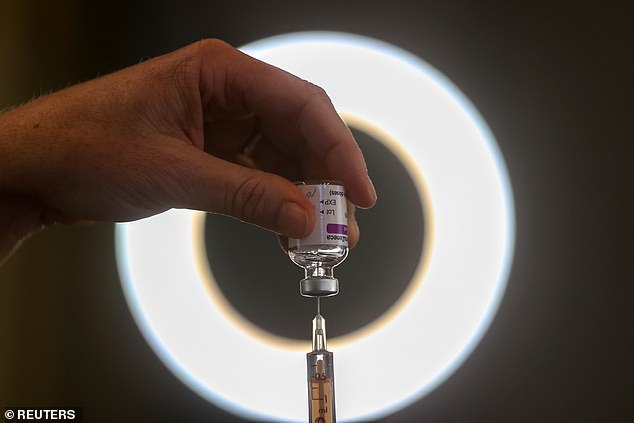
We are going to see variants emerge around the globe, but instead of starting from scratch, the sequence can be plugged in and an updated vaccine produced in months, not years
Currently, our vaccines work superbly well. Surrendering an advantage to the virus by allowing it to start spreading rapidly would be a terrible waste. It will also kill many young, fit people and leave many others devastated with the consequences of infection.
Dying of Covid-19 now is like being a soldier shot dead on Armistice Day when the ink is drying on the treaty but the ceasefire is yet to begin. This is now a vaccine-preventable disease. If everyone complies with lockdown right now, that vaccine potential won’t be wasted.
Why more patients are now surviving
The hospital death rate from Covid has dropped spectacularly. Partly this is due to the case mix of patients (tragically, many people most likely to die have already died), but in large part it’s also due to advances in clinical care.
The high-tech solutions, especially the drugs, make the headlines — but they’re not the only thing making the difference, as I saw when I went to interview Mark Vargas, a senior charge nurse on the intensive care unit (ICU) nursing team at University College London Hospital.
I watched his team perform an emergency ‘prone’ on one of the sickest patients. This is where the patient is flipped onto their front to allow improved blood and air flow in their lungs.
Done badly, it is extraordinarily dangerous, as the ventilator tube can be pulled out. As it is such a risky procedure, in the past it was done only a few times per year, but the patient I saw flipped over while filming Horizon was the third patient expertly and safely proned that day.
Proning is just one of a huge suite of changes made in ICU so that, despite the fact that they are now looking after five patients with just two nurses (the ratio would normally be 1:1), survival rates have still improved.
Advertisement We need to spot the super-shedders
To reduce transmission and the worst effects of long Covid, it’s vital we find the people who spread the most virus and isolate them.
Scientific studies have revealed that the vast majority of people who contract Covid-19 never pass it on — and that between 10 to 30 per cent of infected people are responsible for 90 per cent of all transmissions.
This may be partly down to some people’s biology. In the Horizon programme, Mark Woolhouse, a professor of infectious disease epidemiology at Edinburgh University, refers to these people as super-shedders, because they release unusually large numbers of virus particles.
This was starkly demonstrated in the summer of 2020, when an airliner landed in Ireland from the Middle East carrying 49 passengers.
It was later discovered that 13 were infected with Covid-19. Most of them did not go on to infect anyone else; however, five of the passengers went on to infect 43 other people.
We also know that there are super-spreader events which are crucial. If a super-shedder patient is sitting quietly at home alone, then they won’t infect anyone. But if they go to a party, say, they could infect a huge number of others present.
Super-spreader events tend to be poorly ventilated, indoor environments with lots of crowding: weddings, churches, choirs, gyms, funerals, restaurants. Loud talking or singing massively increases the risk. Clubs and pubs are prime examples.
Any case of Covid is most likely to have been infected at a superspreader event or by a super-shedder. This means that simply isolating the contacts of an infected person, as we currently do, is important — but what we would ideally do is look backwards at all the people our case may have caught it from.
This will identify the superspreader event or person and allow tracing of their contacts — which will produce many more cases who need to be isolated. This is called backward tracing and it is not trivial. It takes resources and money and needs transmission rates to be low enough to do it.
As I write, there are more than 10,000 new cases each day. It is simply not possible to trace and isolate everyone linked to every one of them.
But what is clear is that if our vaccines and our current tracing methods are going to work, we must ensure that transmission rates in the community are at rock bottom before we start to open up the places where it spreads best.
Rapidly opening up venues where large numbers of people are indoors with poor ventilation for prolonged periods may lead to the emergence of vaccine-resistant strains and another cycle of deaths from Covid, followed by lockdown.
I would rather catch Covid-19 now than a year ago. But knowing about long Covid, I would much rather not get it at all. And that is the point of continuing to drive down the daily infection numbers whilst we roll out mass vaccination and effective tracking and tracing.
Danger of trusting in herd immunity
When we do the maths, it looks like we will need to vaccinate many more people against Covid-19 than was previously hoped to achieve herd immunity, which will prevent the virus from spreading.
Indeed, we might have to vaccinate as many as 97 per cent of the population. This is because the new variants we’ve seen so far are significantly more contagious than the strain from China.
Certainly, we can’t rely on natural herd immunity emerging by sufficient people getting infected and surviving to develop their own immune resistance, as some mooted early on. That idea was always extraordinarily naïve and dangerous.
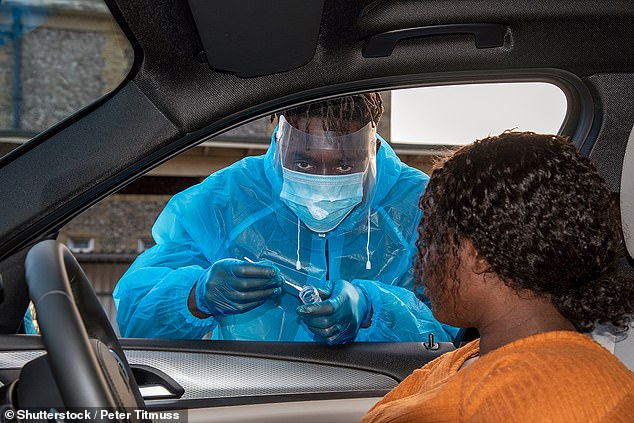
When we do the maths, it looks like we will need to vaccinate many more people against Covid-19 than was previously hoped to achieve herd immunity, which will prevent the virus from spreading
This has been underlined by the fact that high levels of natural transmission have allowed new strains to emerge — and it looks like these can go through the population and re-infect people.
Nor do I think that anyone with expert knowledge believes we can eradicate Covid-19 in the way that we wiped out smallpox — the only virus we have managed to eradicate. But we can reduce its impact with vaccines.
I’m a great fan of vaccination, but I’m not a fan of mandatory vaccination because it generates suspicion. We need to persuade people about how great and safe these vaccines are, not threaten them with ‘no jab, no job’.
Carrots and information work better than sticks.
A worse pandemic on the horizon
Covid-19 has now killed some 2.5 million people worldwide and infected 110 million, many of whom will suffer long-term consequences, and cost the world an estimated £16 trillion.
But compared to what might have happened, we’ve got off relatively lightly. It’s estimated there are more than a million viruses in animals able to infect us, and any one may become a pandemic far worse than this. Imagine a virus that kills 5 to 10 per cent of those it infects, and that this was the death rate in children.
The next pandemic is already in the post. This month, the authorities in Guinea in West Africa declared a new Ebola outbreak; Saudi Arabia’s health ministry has reported four new cases of MERS, a coronavirus we catch from camels.
We know that the more humans invade wild ecosystems, the more we expose ourselves to deadly viruses that can jump from animal species into us. And these jumps are happening more often, driven by global consumption, health inequalities, climate change, agricultural practices and environmental destruction.
We need to improve our global surveillance systems for spotting and stopping novel viral outbreaks. If we don’t, it is a racing certainty that we will see the next pandemic within our lifetimes.
Coronavirus — A Horizon special: What We Know Now, Thursday at 9pm on BBC2.
Source link : https://www.dailymail.co.uk/health/article-9288453/DR-CHRIS-VAN-TULLEKEN-describes-line-battle-humanity-afford-lose.html











